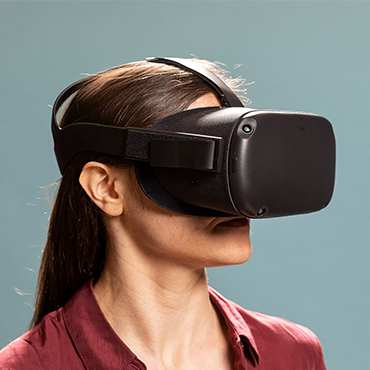What Part Can Virtual Reality Play in Our Classrooms?
Thanks to Google, who aim to take one million kids from the UK on a virtual reality school trip, the possibilities of what the future generation can learn is endless.
What part can Virtual Reality play in our classrooms?
From taking a tour around the Aston Martin factory for careers day, to exploring inspirational figures of the past in history lessons, the question we ask in this article is ‘what part can Virtual reality play in our classroom?’ Of course VR will never fully replace the real life experience kids can get by physically going somewhere but it can however, act as a tool in the classroom to enhance students learning experience. Many schools are suffering from budget cuts and as a way to help children learn and spark their imagination virtual reality could be the answer.
Sundar Pichai, Google (CEO) spoke about the innovative new ways students can get the most out of technology in the classroom and explained “Virtual reality can spark students’ imagination and help them learn about topics like how blood flows through the human body or the impact climate change is having on the Great Barrier Reef”- all from the comfort and safety of the classroom.
Pichai went on to say “We’ve already received feedback from thousands of teachers in the UK and they believe that Expeditions can improve literacy and writing skills, and help create excitement to complement traditional teaching methods.”
Image Credit:
This commitment from Google will help increase the engagement teachers and pupils share within a subject – as no-one likes to stare at a whiteboard for hours on end! If you want to sign your school up and experience virtual reality sign here.
Incorporate stimulating student led-research
When introducing VR into education it’s important to use it in a positive and engaging way. Incorporating such a device for field trips is just one great way to use this technology another example would be the teaching and accessibility of science and the adoption of STEM in schools.
In a collaboration with Google and the UK’s Department for International Development there are already talks about building an experience around the eradication of Ebola. Of course you could never take a school into an infectious disease lab, but it should still be something all students interested in Epidemiology, Biology and science as a whole should have the opportunity to learn more about.
Below is a graph that outlines some of the subjects augmented reality will have a positive effect on.
Enable students to master their learning by way of experimental, collaborative experiences
Where logistics once held people back from exploring new and potential opportunities, virtual reality can now help break down those barriers with some colleges and Universities offering a VR tour and day-in-the-life experiences, giving social fairness to those who may not be in the same position as those who are.
There is only so much a text book can show you and with the advancement of technology, STEM in the classroom is set to be a big thing (science, technology, engineering and mathematics), Maggie Aderin-Peacock MBE, Space and Accessibility Scientist, said “To try to inspire the next generation of space scientists and STEM practitioners I like to take kids on ‘Tours of the Universe’. With this technology it really feels one-step closer to actually being out there. With the range of expeditions available I think that kids will not just be inspired to consider a vast range of careers but will also be able to reach for the stars themselves. I wish this was around when I was young.”
Virtual and augmented reality can enable teaching and training in situations which would otherwise be too hazardous, costly or even impossible in the real world. Have you used these in your classroom or job, if so what are your thoughts?




